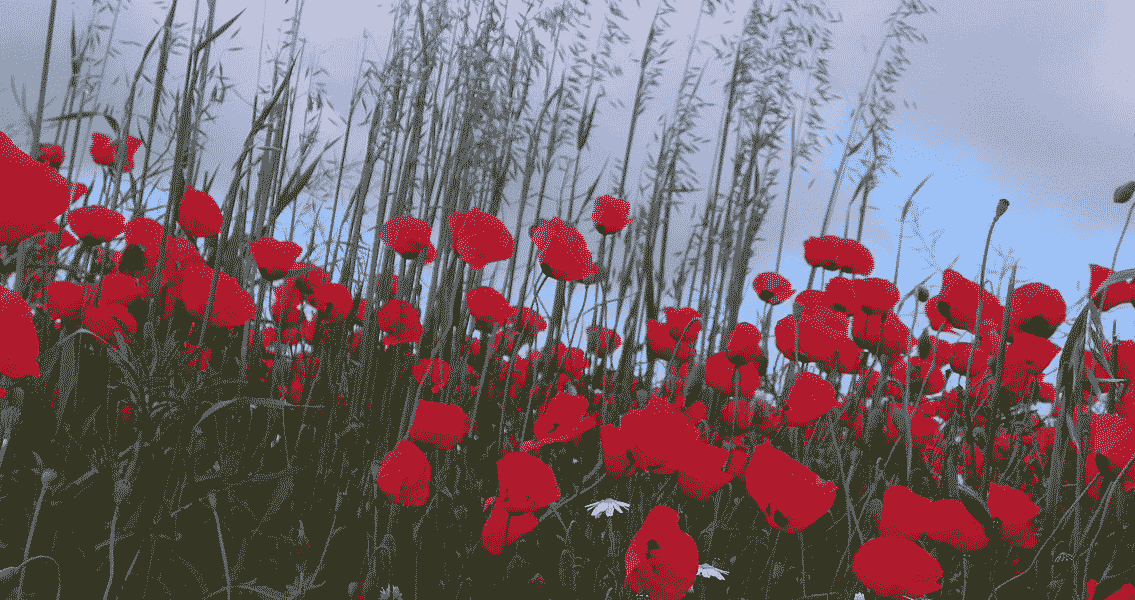<![CDATA[The next few days will mark a poignant time around the world, as a host of ceremonies take place to commemorate those who lost their lives in the First and Second World Wars. At 11am on the 11th November, a minute silence will be observed, acknowledging the exact moment the First World War Armistice was agreed. At the centre of all these events will be the image of the poppy, a small red flower that is popularly used as a tribute to fallen soldiers, but for many people symbolises a lot more. Armistice Day is even more significant than usual this year, as it is the centenary of the outbreak of World War One. In the United Kingdom unique events have been planned to mark this sombre milestone. The Tower of London has installed a spectacular installation of ceramic poppies called The Blood Swept Lands And Seas Of Red. The design features one model poppy for each British soldier killed in the First World War. Another special event took place earlier this week at Kings Cross, one of Britains biggest and busiest railway stations, when a train wrapped in tributes to fallen soldiers was welcomed into the station by a line of active and retired service men. In all of these memorial events the image of the poppy features heavily; a seemingly innocent mark of remembrance that is in fact surprisingly controversial. Over the last few years it has been celebrated by a host of British right-wing organisations as an embodiment of national identity. On the other hand, anti-Armistice Day parades organised by extremist groups have gone as far as publicly burning poppies, hinting at the complicated symbolism the flower represents. As if to prove just how loaded the image of a poppy has become, in 2011 the international football governing body FIFA banned players from wearing them during a match, claiming they represented a political image. The connection between poppies and the tragedy of war goes all the way back to the nineteenth century and the beginnings of major environmental destruction caused by modern warfare. Scarlet corn poppies naturally grow in areas of spoilt earth. In the wake of the Napoleonic wars devastating path through Europe, fields of blood red poppies grew in what was once barren land. Similarly, as the First World War ruined huge swathes of land through Western Europe, red poppies were the only flower to bloom through the devastation. The Canadian military surgeon John McCrae immortalised this image in his poem In Flanders Fields, and poppies have been linked with the tragic sacrifice of war ever since. In 1921 The Royal British Legion adopted the poppy as the image for its Poppy Appeal, a service that aimed to provide aid for those serving in the British Armed Forces, and cemented the flower as the symbol of remembrance for fallen soldiers. The first major controversy surrounding poppies occurred in 1926, when members of The No War Movement campaigned for the image of the poppy to be separated from military culture so it could become a symbol for peace. The initial aim of this campaign was to have No More War printed on all poppies sold for charity. It obviously failed, but gave a hint towards the ways poppies would become politicised. In 1933 the Womens Co-Operative Guild began producing and selling white poppies as a symbol for peace and a part of their campaign to bring about an end to war. Some veterans of the First World War saw the marketing of the white poppies as an insult to the sacrifices they had made, and the disputes about exactly what poppies represented began in earnest. Poppies symbolise different things amongst different national, religious, social and political groups. The anniversary of the Armistice and the centenary of the outbreak of World War One are undoubtedly an important time to reflect on the tragedies faced by the armed forces in times of war. The history of the poppy however, shows that the causes of conflict can appear in the most unexpected of places. ]]>
The Controversial History of the Poppy
